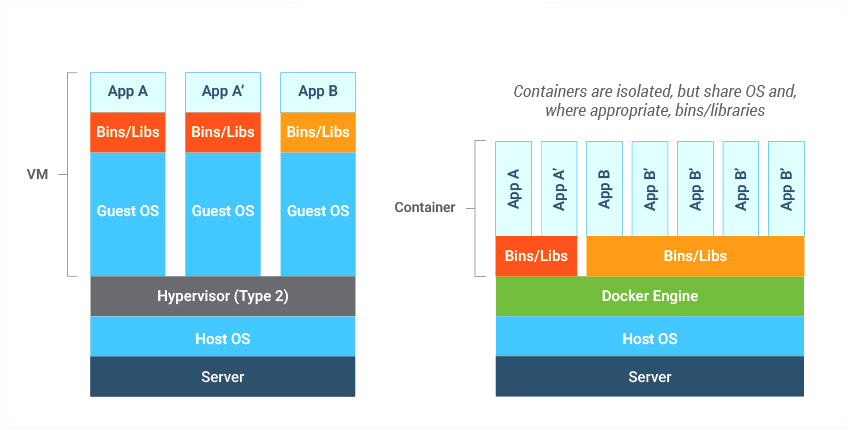
Imagine effortlessly deploying your applications across diverse computing environments, from your local machine to the cloud and everything in between. This seamless experience is made possible with containers.
What is a Container?
Containers are a solution to the problem of how to get software to run reliably when moved from one computing environment to another. This could be from a developer’s laptop to a test environment, from a staging environment into production, and perhaps from a physical machine in a data center to a virtual machine in a private or public cloud.
In its simplest form, containers are software packages that contain code and all the related components. When an application is packaged into a container, it can be easily migrated to another server, or even to a local computer, where it works in the same way. This concept is similar to the shipping industry, in which goods are shipped in standardized containers, making loading, unloading, storing, and transporting easier.
Containers can also run on virtual machines as they are typically measured in megabytes and don’t require hypervisor software, containers are generally a faster, more agile solution for process isolation.
Why Should You Use Containers?
Containers offer many benefits for both development and deployment as they can streamline application development, simplify network and server provisioning, and make overall management more ideal. Below are some of the reasons containers why you use it:
1. Efficiency: Containers share the host system’s kernel, eliminating the need for a full operating system for each application instance. This shared approach reduces resource consumption and accelerates startup times, enhancing performance and cost-efficiency.
2. Portability: Containers ensure uniform behavior across different environments by bundling an application with all its dependencies. This eliminates the friction of moving applications from development to testing and production, providing a smoother deployment pipeline.
3. Isolation: Containers offer robust isolation, preventing applications from interfering with each other. This isolation boosts security and stability, allowing multiple applications to coexist on the same infrastructure without conflict.
4. Scalability: Containers can be scaled quickly to meet changing demands. This elasticity is crucial for managing traffic surges and optimizing resource usage, enabling businesses to respond rapidly to user needs.
5. Performance: Containers guarantee that an application runs the same way, no matter where it is deployed. This consistency eliminates the notorious “it works on my machine” issue, streamlining development and reducing troubleshooting time.
What Can You Do with Containers?
You can deploy containers for many workloads and use cases, whether they are large or small in scale, and they give you and your team access to the necessary technology for cloud-native development and allow you to easily adopt DevOps, continuous integration/continuous delivery (CI/CD), and even serverless architectures.
Container-based applications offer the flexibility to operate across diverse cloud architectures. Application runtime middleware provides a suite of tools to establish a unified environment for development, deployment, integration, and automation.

Virtual Machines vs Containers
Similar to containers, virtual machines (VMs) are stand-alone computing environments that are abstracted from hardware. Unlike containers, VMs require a full replication of an operating system to function, though VMs do offer some unique advantages, such as simulating a different operating system from the host system. For instance, if you host a machine that runs Windows, you can run a Linux within a VM, and vice versa. VMs also offer enhanced isolation and data security as they offer a more fully insulated system of computing.
While VMs offer some unique advantages, their self-contained nature, including their operating system, makes them take longer to boot and run less efficiently compared to containers. On the other side, containers are more lightweight and portable, as a complex workload can be split across numerous containers, which can be deployed anywhere across multiple systems or cloud infrastructures.
For example, you can deploy workloads across multiple containers on your on-premises hardware and public cloud service and manage everything through a single orchestration dashboard. Because of its lightweight and portability, containers can be more efficiently scaled across infrastructure compared to VMs.
The Value of Containers
It is important to understand that containers are not just a trend as they offer benefits such as scalability, portability, and security, all of which will make containers a strategic methodology for workload deployment both now and future. For those just starting their container journey, now is the ideal time to embrace this technology, and adopting containers allows gaining efficiencies while future-proofing your infrastructure.


